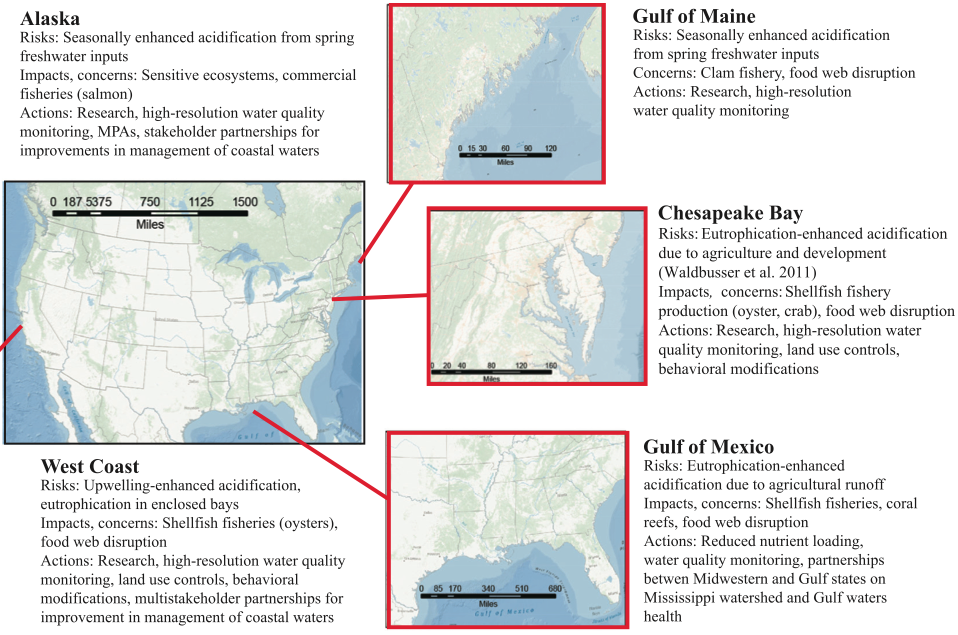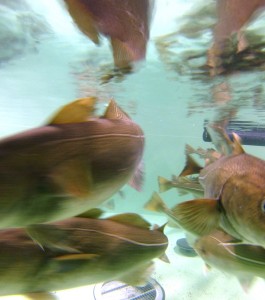The pacific razor clam is an exceptionally meaty and delicious shellfish found on the outer coast beaches of Oregon, Washington, and Alaska. Washington has the largest area of razor clam habitat, with five beaches (including all 24 miles of Long Beach), some small stretches in state parks, as well as some co-managed on tribal land. It is an incredibly popular recreational fishery, with many people rushing out to gather their 15 clam quota at every opening. Speak to a local, and you’ll often hear of a tradition stretching back through several generations of their family.
Dan Ayres, the Department of Fish and Wildlife manager of the razor clam fishery, will even tell you that razor clams helped his grandfather survive the Great Depression. “He would ride down to the beach before dawn on the sideboards of a Model T, and harvest razor clams to trade for staples like milk and butter,” says Dan. For the local tribes, razor clams are important to both community identity and subsistence.
For the small rural communities where tourists flock for their quota, the razor clam makes
all the difference economically. The fishery is managed to provide for small monthly digs, rather than one big dig, to make it more beneficial for local businesses. An average season generates $22 million in economic revenue, and this last year (2013-2014), a banner year for clamming, generated over $40 million with over 450,000 digger trips. The author herself visited Moclips Beach this winter and had a ball learning to dig razor clams (see picture). For places like Moclips, razor clam revenue is the difference between a functioning economy or not – as they painfully learned during harmful algal bloom closures in 1999 and 2003.
So here’s where ocean acidification and our respected readers come in: nobody knows what the potential effect of OA might be on razor clams. No OA research has yet been done on them. The Washington Ocean Acidification Center made razor clams a high priority species in their first request for research proposals, but there weren’t any takers. Apparently there have been struggles in learning how to keep larvae thriving in a lab environment (although some have done it: WDFW ran a successful hatchery in the 80s, and Alutiq Pride Hatchery restored razor clam population to an Alaskan beach). There is still hope of future research: Terrie Klinger, of the OA Center, says, “We would be very interested in funding research on razor clams in the next biennium should we receive additional funding for experimental work.” Jeremy Mathis, whose influential research on OA and Alaska’s fisheries made a big media splash this year, also considers razor clams to be of high importance. We already know that shellfish are often the most vulnerable to OA, so why did the razor clam just have one of its best years? Why have there been no indications, as yet, to them being at all bothered by changing ocean chemistry?
YOU TELL US! We have put together a prestigious panel of judges who will be looking over the theories we receive from our illustrious readers as to just why the razor clam seems to be doing so well (so far) despite being on the front lines of corrosive upwelled water. Then the judges will be putting their heads together to name winners of our various categories, to be announced in the next Ocean Acidification Report. The judges will be Meg Chadsey, Ocean Acidification Specialist at Washington Sea Grant, Dan Ayres, Coastal Shellfish Lead Biologist for WA Dept of Fish and Wildlife, and Joe Schumacker, Marine Resources Scientist for the Quinault Indian Nation.
Here are some theories to get you thinking:
1. Could razor clams benefit from good timing? In other words, is it possible that because they mostly spawn in springtime, most of the young animals at their most vulnerable life stage meet water that is sweeter than in summertime, protecting them from upwelled CO2-enriched waters that clobber some other calcifiers that spawn in the summer? Many oyster farmers have changed the time of year when they release seed to avoid the summer upwelling that causes such high mortality in oyster larvae.
2. When some of the clams hatch out late, what are they doing to cope?
3. Because razor clam populations occur in areas that are regularly exposed to the variable chemistry of upwelled waters are they more tolerant of changes in ocean chemistry?
4. Does hiding your head in the sand really work? Some research has shown that razor clams might be better at surviving hypoxia (periods of low oxygen, killing water) because adults can dig a meter or more into the sand, perhaps allowing them to find better oxygenated water. Could the same be true when OA chemistry becomes unbearable? Juveniles “set” in the sand at 5mm. They don’t have the same digging power, but it may provide some protection.
5. Are they made out of siliceous rock and tank treads?
Our winner’s categories – with plenty of room for everyone’s point of view:
“Most creative speculation”
“Best overall explanation”
“Most extreme wild goose chase”
“Why being dead wrong is sometimes a great way to learn”
“Go directly to jail. Do not pass go.”
To dig into what is known about the razor clam, some links to get you started:
http://wdfw.wa.gov/fishing/shellfish/razorclams/2013_razor_clam_season_setting.pdf
http://www.nwrc.usgs.gov/wdb/pub/species_profiles/82_11-089.pdf
http://www.adfg.alaska.gov/static/education/wns/razor_clam.pdf
Email theories to info@globaloceanhealth.org, or post on our Facebook page.
This is meant to be both fun and serious, so feel free to go wild with your best creative thinking. Beyond the prestige of seeing your name and theory in the next Ocean Acidification Report (which is mailed to over 6,000 readers in over 100 countries), Global Ocean Health will post the winners on Twitter (@GlobalOAHealth) and Facebook, and honor your contribution with a certificate (suitable for framing) to show all your friends. So please, get going and get us your theories in the coming month!

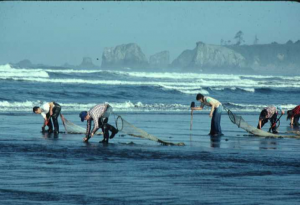
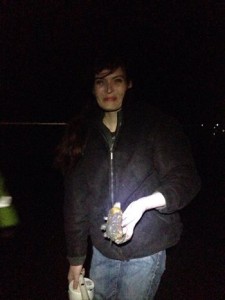
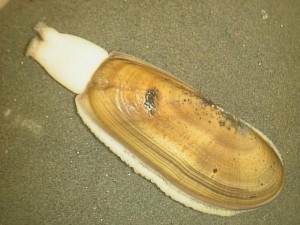
 between its diverging branches towards an integrated assessment. This is the conclusion drawn by Prof. Ulf Riebesell from GEOMAR Helmholtz Centre for Ocean Research Kiel and Dr. Jean-Pierre Gattuso from the French Centre National de la Recherche Scientifique (CNRS) and Universite Pierre et Marie Curie.
between its diverging branches towards an integrated assessment. This is the conclusion drawn by Prof. Ulf Riebesell from GEOMAR Helmholtz Centre for Ocean Research Kiel and Dr. Jean-Pierre Gattuso from the French Centre National de la Recherche Scientifique (CNRS) and Universite Pierre et Marie Curie.

